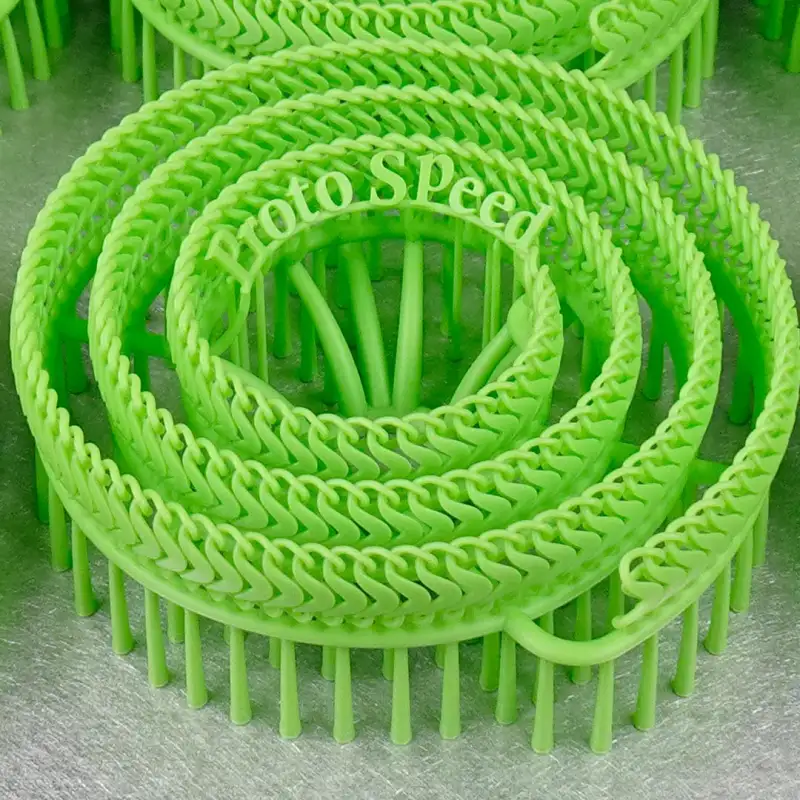Revolutionizing Jewelry Design: The Power of Spiral Chains in 3D Printing
In the fast-evolving world of jewelry manufacturing, efficiency, creativity, and innovation are everything. With the rise of 3D printing technologies, new frontiers have opened for jewelers — and one of the most groundbreaking techniques making waves today is designing chains in a spiral configuration.
At Protospeed, we constantly push boundaries to support jewelry designers and manufacturers with smarter ways to print, cast, and create. In collaboration with Proto Resins, we are thrilled to present the spiral chain — an optimized design that transforms how chains are printed and cast.
Let’s explore why spiral chain designs are a game-changer in jewelry 3D printing:
1. Maximize Platform Utilization
Even with the largest printing platforms, traditional straight-chain designs hit a hard stop on how long a chain can be. By coiling the chain into a spiral, manufacturers can now produce longer chains on compact build platforms, drastically improving material and machine efficiency. This is particularly beneficial for jewelers using smaller DLP printers — a longer output from the same hardware.
2. Smarter Flask Packing for Casting
Traditional chain orientations are bulky and awkward to place in casting flasks. Spiral chains, on the other hand, occupy significantly less horizontal space. This allows manufacturers to:
- Load multiple chains in a single flask.
- Combine spiral chains with other jewelry designs in the same casting cycle.
This optimization can increase output per flask and lower the per-piece casting cost.
3. Improved Print Support and Height Management
Spiral chains can be stacked vertically, making them more compatible with printer geometries and increasing the number of prints per batch. The vertical growth of the spiral helps reduce overhang issues, making it easier to support and less prone to failures — both during printing and burnout for casting.
4. Free STL: Try It Yourself
To help the community adapt faster, Protospeed is offering a free STL file of the spiral chain. The design is pre-supported and casting-ready, giving you a hands-on opportunity to analyze, test, and implement this method in your production pipeline.
Download it. Print it. Cast it. See the results for yourself.
5. Design Considerations: Getting It Just Right
Designing spiral chains isn't just about coiling — it’s about precision engineering. The key challenge lies in:
- Selecting the correct link size and spacing so they don’t fuse during printing.
- Maintaining a perfect spiral angle to balance space-saving with structural integrity.
- Ensuring each link moves freely post-casting, retaining the chain’s flexibility.
This requires an understanding of both mechanical design and resin behavior, something our R&D team at Protospeed has fine-tuned.
Final Thoughts: Innovation Meets Tradition
Jewelry is an art of tradition — but production is now an art of innovation. By embracing smarter design techniques like the spiral chain method, manufacturers can reduce material waste, optimize their printing and casting workflows, and scale production without sacrificing quality.
We invite all designers and manufacturers to try out this technique, explore new possibilities, and be part of the next wave of jewelry innovation.

